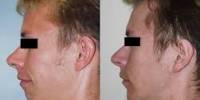Researchers at Mass Eye and Ear and Northeastern University have uncovered an immune response that defends against upper respiratory infection-causing viruses inside the nose. Further research found that cooler temperatures impair this defensive response, increasing the likelihood of an infection.
According to the scientists, the new study provides the first scientific basis to explain why viruses like the common cold, the flu, and COVID-19 are more likely to surge in colder seasons. It was published on December 6, 2022, in The Journal of Allergy and Clinical Immunology.
“Conventionally, it was thought that cold and flu season occurred in cooler months because people are stuck indoors more where airborne viruses could spread more easily,” said Benjamin S. Bleier, MD, FACS, director of Otolaryngology Translational Research at Mass Eye and Ear and senior author of the study. “Our study however points to a biological root cause for the seasonal variation in upper respiratory viral infections we see each year, most recently demonstrated throughout the COVID-19 pandemic.”
First-line defense in the nose
The nose is one of the first places where the interior of the body comes into contact with the outside world, making it a possible entrance point for microorganisms that cause disease. An upper respiratory infection can result from pathogens that are breathed or that are directly deposited (by the hands, for example) into the front of the nose.
We’ve uncovered a new immune mechanism in the nose that is constantly being bombarded, and have shown what compromises this protection. The question now changes to, ‘How can we exploit this natural phenomenon and recreate a defensive mechanism in the nose and boost this protection, especially in colder months?
Dr. Mansoor Amiji
From there, the pathogens go backward through the airway and into the body, where they infect cells. How the airway protects itself against these pathogens has long been poorly understood.
That is until a 2018 study led by Dr. Bleier and Mansoor Amiji, PhD, Distinguished Professor of Pharmaceutical Sciences at Northeastern University, uncovered an innate immune response triggered when bacteria is inhaled through the nose: Extracellular vesicles, also known as exosomes, are microscopic fluid-filled sacs that are released into the mucus by cells in the front of the nose in order to surround and kill germs. These cells first identify the bacteria. Dr. Bleier compares the release of this EV swarm to “kicking a hornets’ nest.”
The 2018 study also demonstrated how the EVs transport antibiotic proteins that shield other cells from bacteria before it enters the body too deeply through the mucus from the front of the nose to the back along the airway.
For the new study, the researchers sought to determine if viruses inhaled through the nose, which are the source of some of the most common upper respiratory infections, also triggered this immune response.
Virus-fighting mechanism tested in varying conditions
Researchers examined how cells and nasal tissue samples taken from the noses of surgical patients and healthy volunteers responded to three viruses: a single coronavirus and two rhinoviruses that cause the common cold. The research was led by first study author Di Huang, PhD, a research fellow at Mass Eye and Ear and Northeastern.
They discovered that each virus induced an EV swarm response from nasal cells, but by means of a different signaling pathway than the one employed to combat bacteria. The researchers also discovered a mechanism at play in the response against the viruses: Upon their release, the EVs acted as decoys, carrying receptors that the virus would bind itself to instead of the nasal cells.
“The more decoys, the more the EVs can mop up the viruses in the mucus before the viruses have a chance to bind to the nasal cells, which suppresses the infection,” said Dr. Huang.
The next step was to evaluate how this reaction was altered by colder temperatures, which is important for nasal immunity because the internal temperature of the nose is closely related to the temperature of the outside air it inhales. They took healthy volunteers from a room temperature environment and exposed them to 4.4° C (39.9° F) temperatures for 15 minutes and found that the temperature inside the nose fell about 5° C.
They next applied this drop in temperature to samples of nasal tissue and noticed a weakened immunological reaction. Nearly 42% less EVs were secreted by the nasal cells, and the antiviral proteins in the EVs were similarly compromised.
“Combined, these findings provide a mechanistic explanation for the seasonal variation in upper respiratory infections,” said Dr. Huang.
Therapeutic potential
Future studies will aim to replicate the findings with other pathogens. In challenge experiments, an animal model or human would be exposed to a virus and their nasal immune response would be assessed.
The researchers can also think of strategies for how treatments might stimulate and reinforce the innate immune response in the nose based on their most recent findings. For example, a drug therapy, such as a nasal spray, could be designed to increase the number of EVs in the nose or binding receptors within the vesicles.
“We’ve uncovered a new immune mechanism in the nose that is constantly being bombarded, and have shown what compromises this protection,” said Dr. Amiji. “The question now changes to, ‘How can we exploit this natural phenomenon and recreate a defensive mechanism in the nose and boost this protection, especially in colder months?’”
















